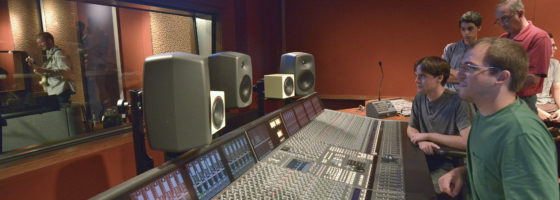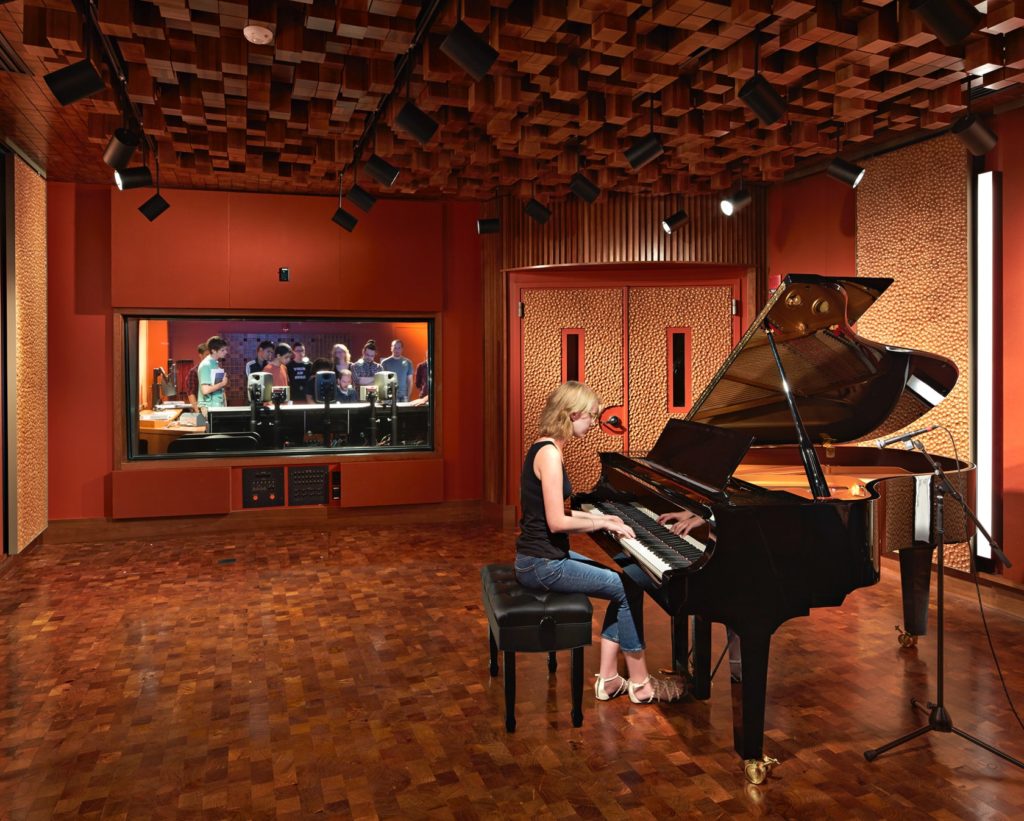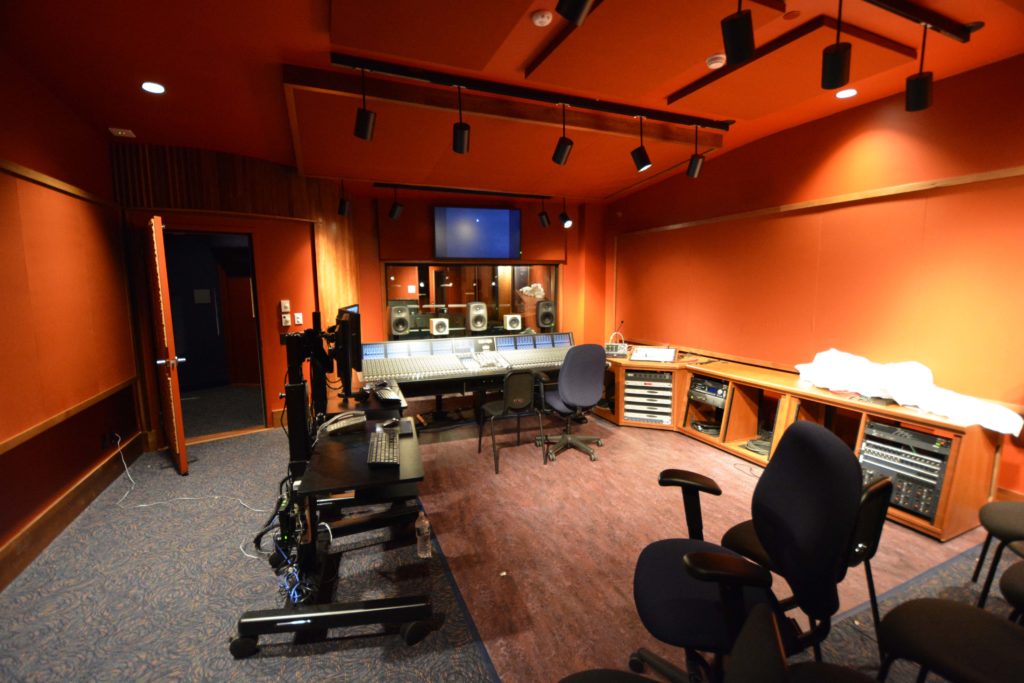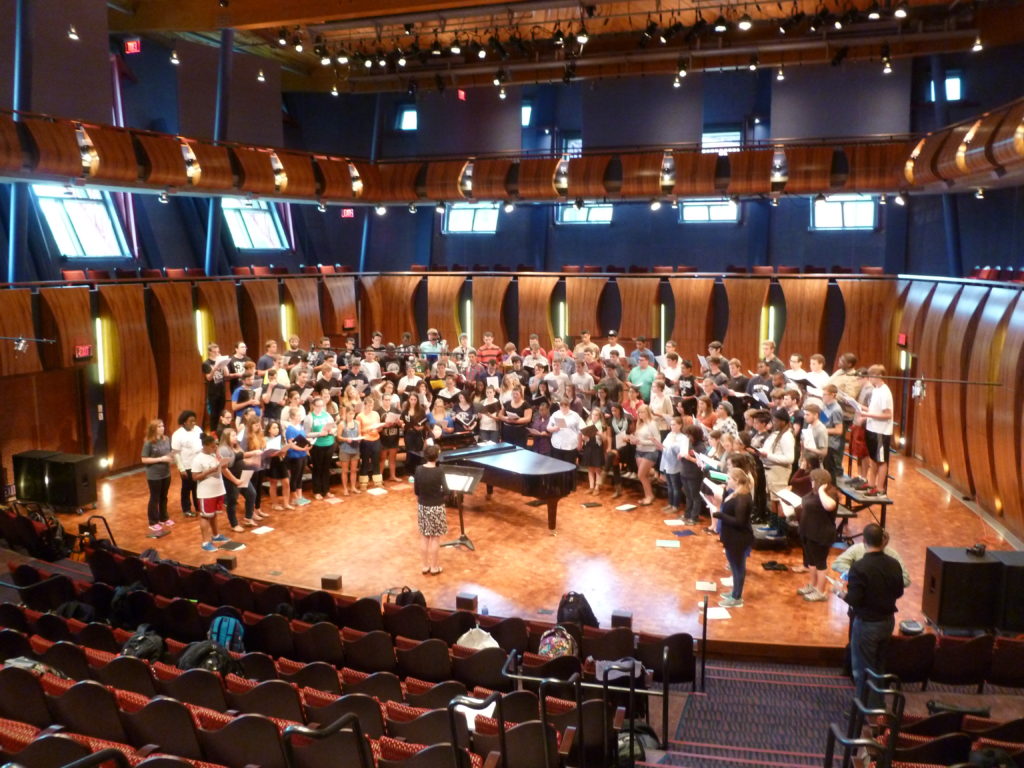Driving Enrollment Through Sound Technology
Matt Nichols | May 6, 2019

There’s a certain amount of truth in that adage, “If you build it they will come,” a memorable line from the 1989 film, Field of Dreams. And like all aspirations, centers of higher education are often unaware of the importance of offering well-equipped audio recording and production facilities. Just as Kevin Costner’s film character responds to the words by building a baseball diamond that brings to Iowa a bevy of Chicago White Sox players, higher-caliber undergraduate and graduate students will be attracted to a school of music, college or university that offers state-of-the-art facilities in which they can learn everything they need to know about the creative process of producing contemporary and classical music and theater.

Recording Studio
Robert Benson, Photographer
Preparing Students for Professional Success
A talented carpenter utilizes sharp tools to create a memorable piece of furniture; deans and faculty heads now realize that they have to offer a well-equipped recording studio or performance space fitted out with adequate sound and video technologies that match those found in the real world. Because students and their parents also are looking for a return on their financial investment, academic establishments have to ensure that the skills learned in such well-equipped environments will lead to a successful and lucrative career in the performing arts.
In essence, your college or school should engage a capable and knowledgeable organization that can study the various spaces you have available and, based upon decades of industry-wide experience, advise you how such environments can be turned into a fully outfitted production facility. And thereby create a setting in which your students will develop the types of creative skills that will equip them well in the outside world and enhance the quality of your enrollment. University deans and faculty managers have come to recognize that access to familiar, industry-accepted technology is just the beginning. There should also be an equal emphasis on the process of recording – how the mixers, recorders, microphones and monitor speakers are used creatively to produce music in sonically-robust spaces that behave like real-world studios and performance venues.

Control Room
Let me tell you about the Visual & Performing Arts Center that JH helped design for Western Connecticut State University’s Westside campus in Danbury. The dean and faculty decided that a fully-equipped recording studio would advance the university’s curriculum and attract more students that were looking to pursue a career in the recording arts. With access to leading-edge technologies found in commercial facilities, students could develop the necessary creative skills to be better prepared for the music industry and hence secure well-paying jobs upon graduation.
Flexible Technology
WCSU’s $97 million fine-arts center soon became a valuable focus for its performing arts program, with a recording studio suite that we equipped with the latest in analog and digital technologies, including a Solid State Logic Duality audio console. Needless to say, we provided acoustic and AV system design services that were implemented specifically to let students experience for themselves a professional-quality arts education. They can record live performances from the university’s pair of performance spaces, in addition to the resources acquired from audio production companies, or remixing multitrack recordings to stereo or surround-sound formats with HD-quality video. For complete AV integration and inter-operability, our design team specified direct tielines between the primary live room, an isolation room, and the various control rooms, using advanced fiber-optic systems. For added flexibility, we also specified motorized microphones for the center’s concert hall that can be adjusted remotely from the recording studio’s control room.

Performance Venue Exudes Energy
Attracting Students and Faculty
Reactions from the university’s dean and faculty have been extremely positive. The staff reports that, because of their new sound-centric facilities, which dramatically enhance teaching and learning capabilities, the university now attracts a higher caliber of undergraduates and graduate students and – as a bonus – has secured new donors that want to be associated with such a successful operation. Faculty members also state that the new recording program has attracted an increasing number of musical performers that want to experience for themselves the university’s new studio areas; such talent has meant that current and new faculty members are enjoying unique collaborations.
All in all, WCSU’s new recording space has evolved to be a win-win for everybody involved, and underscores the importance of high-caliber sound facilities for teaching environments.

Comments